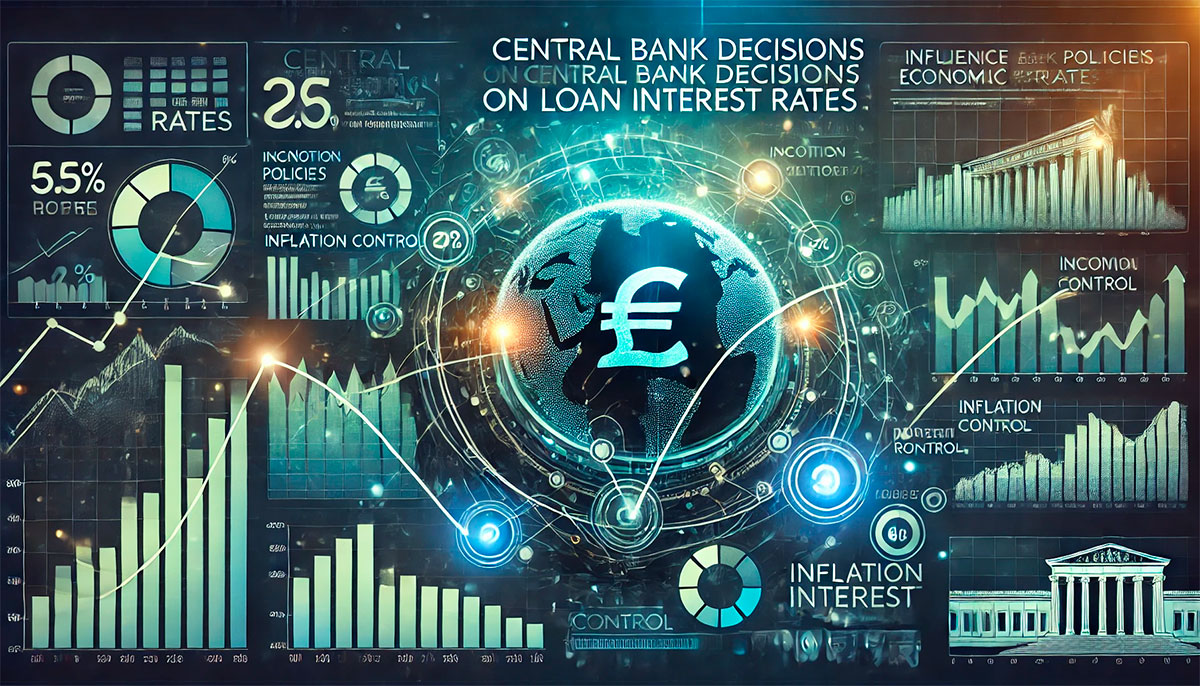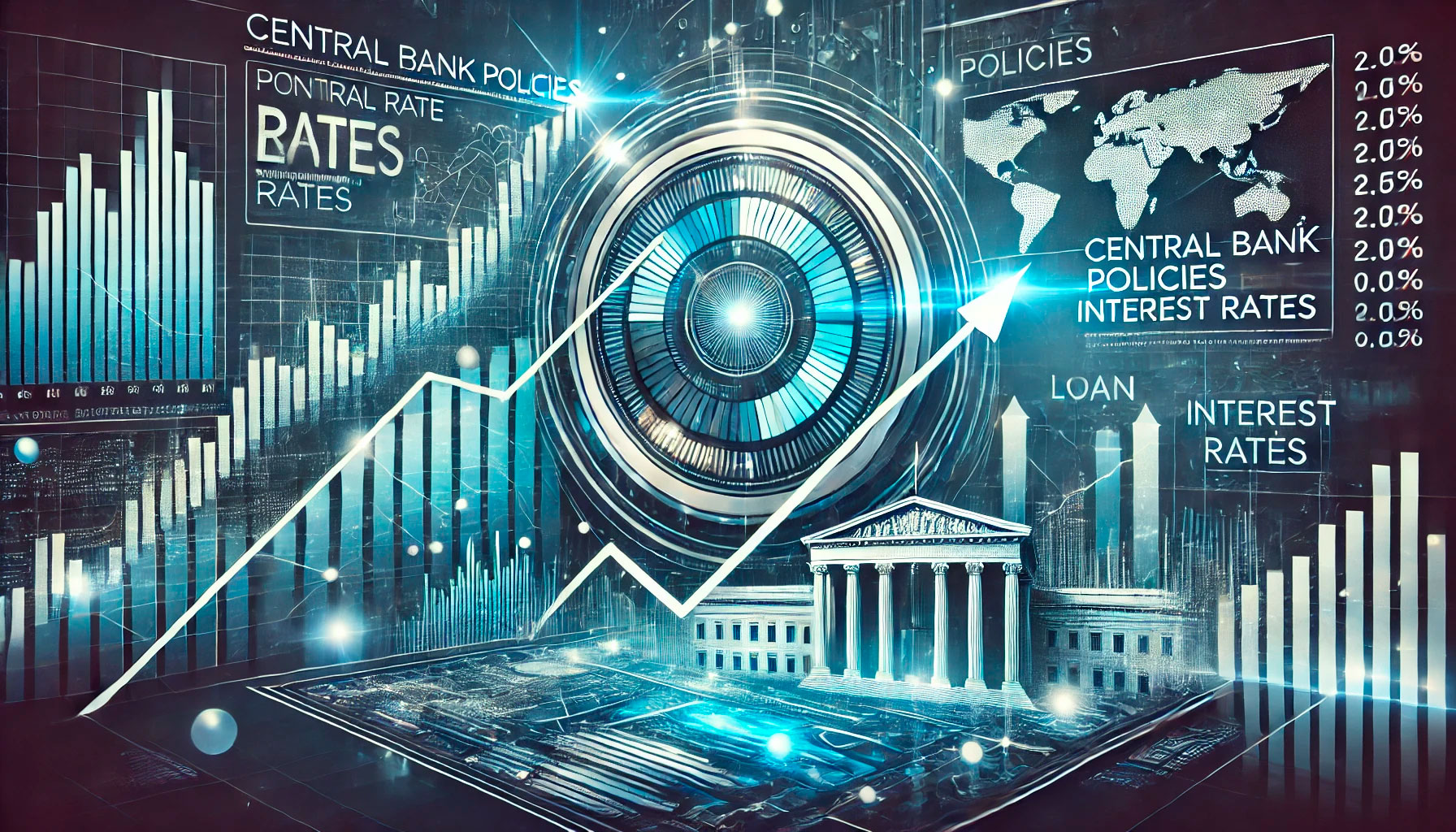Central banks play a pivotal role in shaping the economic landscape of a country, and one of their most significant tools for influencing economic activity is the setting of monetary policy. Central bank policies have a direct and profound impact on loan interest rates, which in turn affect the borrowing and lending behaviors of consumers, businesses, and financial institutions. By adjusting key policy rates, central banks can either encourage borrowing and spending or slow down inflationary pressures. This article explores how central bank policies influence loan interest rates, the mechanisms behind these changes, and the broader implications for the economy.
The Role of Central Banks in Monetary Policy
Central banks are the primary financial institutions responsible for implementing a country’s monetary policy. They control the money supply, regulate inflation, and maintain the stability of the financial system. The most common central banks include the Federal Reserve in the United States, the European Central Bank (ECB) in the Eurozone, and the Bank of England in the United Kingdom. These institutions have a range of tools at their disposal to influence the economy, with one of the most important being the manipulation of interest rates.
The central bank’s primary policy tool for influencing loan interest rates is the setting of its benchmark interest rate, also known as the “policy rate” or “official interest rate.” This rate is the interest rate at which commercial banks can borrow money from the central bank. The policy rate serves as a reference point for the interest rates set by commercial banks for loans, mortgages, and other forms of credit. By adjusting this rate, central banks can influence the cost of borrowing throughout the economy.
The Impact of Central Bank Rate Cuts
When central banks cut interest rates, they make borrowing cheaper for commercial banks. As a result, commercial banks are more likely to lower the interest rates on loans they offer to businesses and consumers. This encourages borrowing by reducing the cost of financing, which in turn can stimulate economic activity. Lower loan interest rates make it more affordable for consumers to take out loans for major purchases, such as homes or cars, and for businesses to invest in expansion, new equipment, and hiring.
Central banks often reduce interest rates during periods of economic downturn or recession to stimulate demand and boost economic growth. By making borrowing cheaper, they encourage consumers to spend more and businesses to invest. This increased spending helps to raise aggregate demand, which can, over time, lead to job creation, higher production, and ultimately economic recovery. The goal of rate cuts is to create a more favorable environment for investment and consumption, which can help lift the economy out of a slump.
The Effect of Central Bank Rate Hikes
Conversely, when central banks raise interest rates, the cost of borrowing increases. This leads to higher loan interest rates for consumers and businesses, which can have a cooling effect on economic activity. Higher interest rates make borrowing more expensive, which typically results in reduced demand for loans. Consumers may delay or forgo purchasing big-ticket items like homes or cars, while businesses may scale back expansion plans or investment projects due to the increased cost of financing.
Central banks usually raise interest rates in response to rising inflation or an overheated economy. When inflation is high, central banks may hike rates to curb excessive spending and bring inflation under control. Higher interest rates discourage borrowing and spending, which helps reduce the demand for goods and services, easing inflationary pressures. Rate hikes are typically implemented during periods of economic expansion, when inflation is rising and there is concern about the economy growing too quickly, potentially leading to unsustainable levels of debt and higher prices.

The Transmission Mechanism: How Central Bank Rates Affect Loan Interest Rates
The process by which changes in the central bank’s policy rate affect loan interest rates is known as the transmission mechanism. Central banks influence loan interest rates through several key channels:
- Commercial Bank Borrowing Costs: When the central bank changes its policy rate, it directly affects the cost at which commercial banks can borrow money. If the policy rate is lowered, commercial banks can borrow at lower rates and pass on the savings to their customers by offering lower interest rates on loans. Conversely, when the policy rate is increased, commercial banks face higher borrowing costs, which they often pass on to consumers and businesses in the form of higher loan interest rates.
- Market Expectations: Central bank policies also influence the expectations of financial markets. When markets anticipate that the central bank will raise or lower interest rates, they adjust their behavior accordingly. For instance, if investors expect a rate hike, they may demand higher yields on bonds and other financial instruments, which can lead to higher borrowing costs in the wider economy. The central bank’s actions signal to the market the direction of future monetary policy, and these expectations influence the pricing of loans and other forms of credit.
- Inflation Control: Central banks use interest rates as a tool to manage inflation. By raising interest rates, central banks can cool down an overheating economy and reduce inflationary pressures. On the other hand, by lowering interest rates, they can encourage borrowing and spending, which can help counteract deflationary pressures in the economy.
The Broader Economic Implications of Central Bank Policies
The impact of central bank policies on loan interest rates extends far beyond individual borrowers. Changes in interest rates can have wide-ranging effects on the economy as a whole, influencing everything from consumer spending to business investment and the housing market. When interest rates are low, borrowing becomes more attractive, leading to increased consumption and investment. However, if rates rise too quickly or too high, it can slow down economic activity, leading to reduced demand for loans and lower economic growth.
Additionally, central bank policies on interest rates can influence the currency value. When a central bank raises interest rates, it often leads to an appreciation of the national currency, as higher interest rates attract foreign investment. A stronger currency can reduce the cost of imports, helping to lower inflation. Conversely, when a central bank cuts interest rates, it can lead to a depreciation of the currency, which may increase the cost of imports but also boost exports by making them more competitively priced in foreign markets.
Conclusion: The Power of Central Bank Policies on Loan Interest Rates
In conclusion, central bank policies have a significant and direct influence on loan interest rates, which in turn impact the broader economy. By adjusting the policy rate, central banks can either encourage or discourage borrowing, depending on the economic circumstances. During periods of economic downturn, rate cuts can stimulate demand and foster recovery, while rate hikes during times of economic expansion help to control inflation and ensure sustainable growth. The transmission mechanism through which central bank policies affect loan interest rates is complex, involving a variety of channels such as commercial bank borrowing costs, market expectations, and inflation control. Understanding how central banks influence loan interest rates is crucial for businesses, consumers, and policymakers alike, as it provides valuable insights into the state of the economy and the cost of borrowing in any given period.

